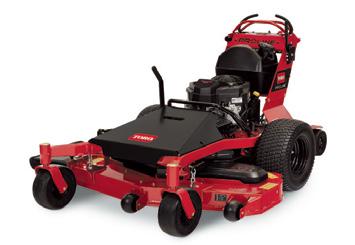News Gardener News



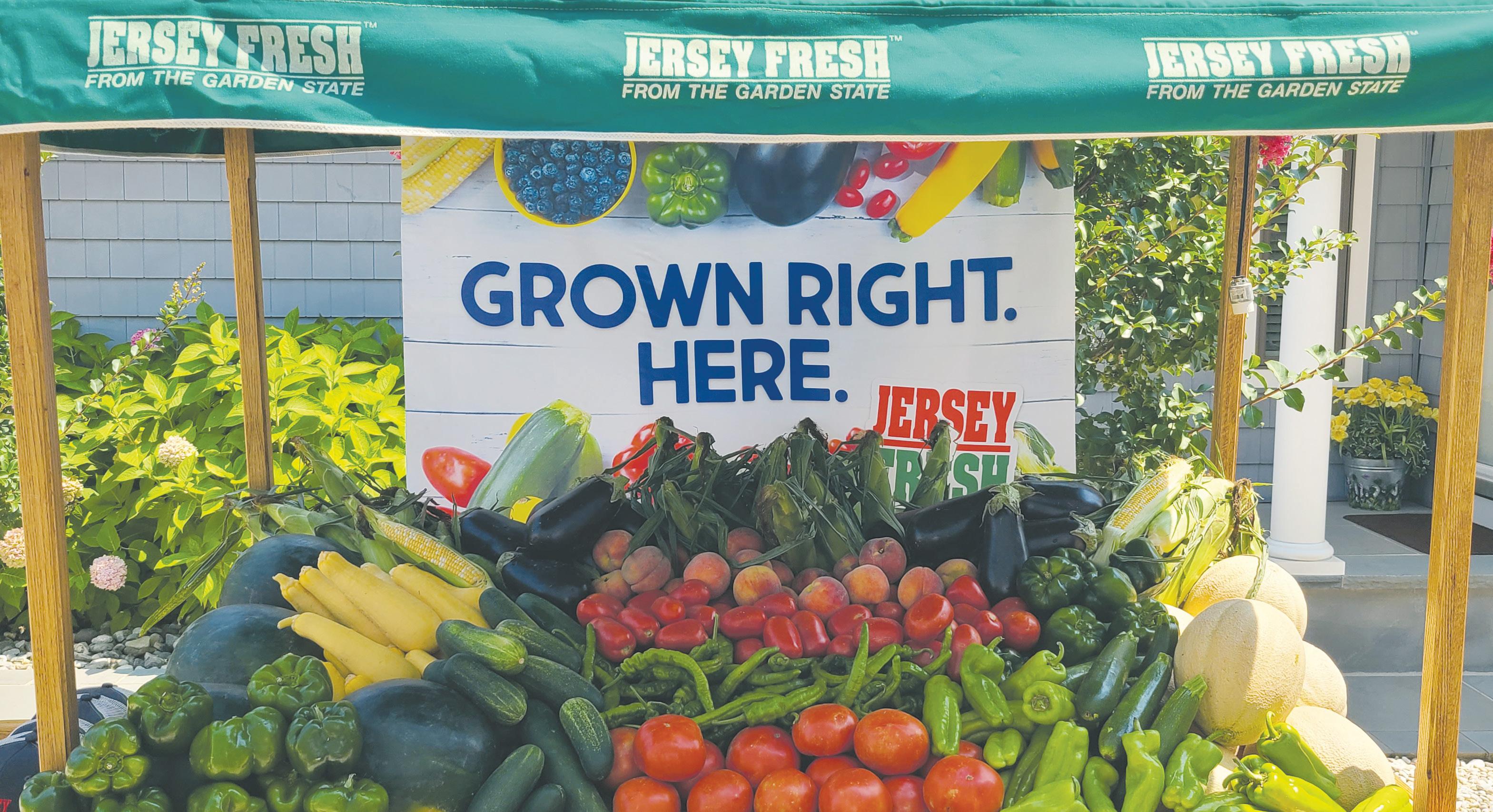
Jersey Fresh was established in 1984 by the New Jersey Department of Agriculture. It is the official NJ Dept. of Agriculture

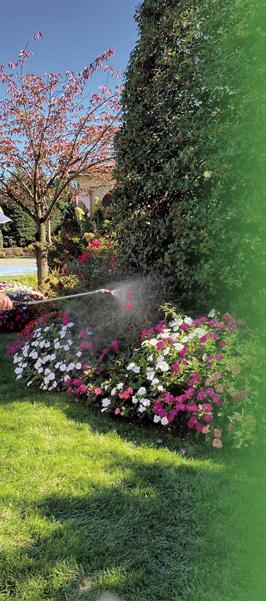
advertising, promotional and quality grading program created to help farmers inform consumers about the availability and variety of fruits and vegetables grown in New Jersey. The Jersey Fresh logo was designed to inform consumers which fruits and vegetables were grown in the Garden State.
The first Jersey Fresh television commercial was made in 1986 in a soybean field. The Jersey

Fresh farm market carts were originally built in 1988 to promote Jersey Fresh produce at fairs, trade shows, conferences, and supermarkets in the Garden State and beyond.
Through the many years of the program, consumers’ awareness has increased, and it has become the benchmark for other states to initiate their own state-grown agricultural marketing programs. (Cont. on Page 16)









By Lesley Parness Garden Educator
Our list of Plant Patriots keeps growing – a shy citrus wizard, a politically connected plant explorer and this month –George Washington Carver, who broke the shackles of slavery and the mysteries of soil.
Born into bondage around 1864 on a farm in Diamond Grove, Missouri, George Washington Carver’s innovations earned him the friendship and respect of the most influential men of the 20th century. He didn’t care about that. He dedicated his life to helping the “man who was the farthest down.”
He and his mother Mary were the property of Moses and Susan Carver. When George was an infant, his mother was abducted by Arkansas Confederate enslavers. He never saw her again and was raised alongside Carver’s children, learning to read and write with them. From the start George loved learning and showed a special interest in animals and plants along with a marked talent for drawing them. The limited number of schools admitting Black students forced Carver to travel around the Midwest, and he eventually graduated from a high school in Kansas. When a teacher suggested he combine his love of art and plants by studying botany, George enrolled in Iowa State University – their first African American student. He earned a BS and then an MS there, becoming their first Black professor. When in 1896 he met Booker T. Washington and visited Tuskegee Normal and Industrial Institute, the all-Black college in Tuskegee, Alabama, his life’s mission fell into place.
All around him the Dust Bowl raged, and the Great Depression deepened. Carver’s research
in soil conservation and crop rotation was crucial at this time. Cotton removes nutrients from the soil, subsequently weakening the crop. Carver taught farmers to use crop rotation, alternating between cotton, sweet potatoes, and soybeans. This helped them increase yield, diversify the products they produced, and be more successful.
Cotton also attracted the dreaded boll weevil. When Carver discovered that boll weevils don’t like peanuts, he began a one-man PR campaign for this legume. Carver introduced 375 new peanut products including cooking oil, dyes for clothing, plastics, fuel for cars, body lotions and milk.
Carver also invented 108 new sweet potato products, 75 new uses for the pecan, and countless soybean stuff. Carver never filed for a single patent. He gave away everything he invented to the public, earning the title “the farmer’s best friend.”
In 1921, while the Ku Klux Klan controlled much of his sweet Alabama home, he appeared before the U.S. Congress on behalf of peanut farmers. He turned their disinterest into rapt attention as he took one peanut product after the next out of his shabby coat pockets, placed them on a table, and explained their use. Finally, after several hours, he had convinced them of the power of the peanut. They gave him a helpful tariff and a standing ovation.
Carver became known around the world as an expert on agriculture. He advised Presidents Coolidge and Roosevelt, was sought after by racist industrialist/inventors Ford and Edison, was wooed by Stalin, and he even worked with
Mahatma Gandhi in India. Of his fame, Carver said, “It is not the style of clothes one wears, neither the kind of automobile one drives, nor the amount of money one has in the bank, that counts. These mean nothing. It is simply service that measures success.”
My favorite part of Carver’s legacy was his role in shaping the Cooperative Extension Service. Carver knew the best way to explain farming to farmers was outdoors, with your hands in the soil. So, he created a travelling classroom, the Jesup Agricultural Wagon. First a horse drawn wagon, and later a truck, the USDA widely adopted his mobile outreach model. Mobile vehicles continue to be used today. Dr Carver authored hundreds of useful articles of the type the Extension is now known for. He wrote and edited them and often paid for their printing while authorities dilly-dallied about budgets. If you need a recipe for tomatoes, cow peas, sweet potatoes, wild plums or, of course, the peanut, he’s your man.
Carver died on January 5, 1943. Congress named January 5th as George Washington Carver Day. He is buried at Tuskegee Institute next to his friend, Booker T. Washington. The National Park Service preserves his birthplace near Diamond, MO. The George Washington Carver National Monument was the first of its kind to honor anyone other than a President and the first to honor a Black American.
You can learn more about Carver, read his favorite poem and his marvelous, still useful bulletins at https://www. tuskegee.edu/support-tu/georgewashington-carver.
Editor’s Note: Lesley Parness offers a variety of presentations and workshops for garden clubs, plant societies, and horticultural gatherings. Recently retired from her position as Superintendent of Horticultural Education at the Morris County Park Commission, and with four decades of teaching environmental science and garden education, her focus now is garden history. A complete listing of her talks can be seen at lesleyparness.com and she can be reached at parness@verizon.net. This column will appear in the paper every other month.



Schools are out for the summer and now kids and adults alike are looking for something fun to do. But just because school is out doesn’t mean you can’t still learn something – and still have fun while doing so.
We are now in County Agricultural Fair season, where you can wander the midway looking at all the colorful, exciting rides, listening to the laughs and screams of those on-board. You can find some of the craziest food options (frequently deep fried) that you’ve ever seen. And you can walk through the 4-H agricultural displays.
The state has 18 agricultural fairs throughout the summer season and each one is a little different. But one thing that is consistent at each are the tents and buildings with animals and other ag-related exhibits.
As a child, I liked the rides, games, and food, but the animals were definitely my favorite. You had the chance to get up close with rabbits, pigs, chickens, horses, hogs, and cows. Sometimes, you could go into the petting area with goats and sheep. As I got older, I began to appreciate the other farm- and garden-related areas that included vibrant plant

By Joe Atchison III Assistant Secretary of Agriculture
and flower arrangements. Also, fruit and vegetable displays adorned with ribbons for the best examples harvested. I didn’t know it then, but all these years later and my job is right in the heart of all things agricultural.
Now I get to go to these fairs and see them through the eyes of an adult, but also having appreciated the joy my kids found when they were younger, and I get to talk to current students who are raising animals from a young age and to hear about their challenges and the rewards involved in the program.
These opportunities give students a purpose and a sense of pride that can be seen as they boast about their animals and what it took to carefully tend to them. These are lessons that are much needed and well learned
by young people who see a future for themselves in agriculture, especially animal agriculture, where any day can bring major surprises in the health and productivity of the livestock.
One word of advice. Please follow ALL posted rules about interacting with the animals, especially those regarding handwashing, as they are aimed at protecting the animals from any pathogens you might bring to the fair as much as they exist to protect you from picking up anything from the animals.
The Department of Agriculture – and its policymaking arm, the State Board of Agriculture – play a role in certifying which fairs in the state qualify as “agricultural fairs.” There must be a strong agricultural component to the displays and activities featured at
A Year-Round Celebration of the Garden State's Fruits and Vegetables
FAMILY SIZE, SERVES 6 PORTION SIZE: 5 oz
1 lb grated zucchini, salted & drained
6 large eggs
1 cup heavy cream
8 oz smoked gouda, grated
2 tbsp fresh chives, chopped
½ tsp dried dill
½ tsp salt
¼ tsp white pepper
2 tsp butter (for greasing)
a given fair for it to receive that imprimatur from the NJDA.
So far for 2025, there have been 18 fairs approved as agricultural fairs by the New Jersey State Board of Agriculture.
They include: Atlantic County 4-H Fair, Egg Harbor; Bergen County Fall Festival, Ridgefield Park; Burlington County Farm Fair, Springfield Township; Cape May County 4-H Fair, Cape May; Cumberland County Cooperative Fair, Millville; LEAD Fest Fair, Hamilton Township (Mercer County); Gloucester County 4-H Fair, Mullica Hill; Hunterdon County 4-H and Agricultural Fair, Ringoes; Mercer County 4-H Fair and Farmers Show, Lambertville; Middlesex County Fair, East Brunswick;
1
2
3 FUN FACT!
Even though we treat it like a veggie, zucchini is actually a fruit because it comes from a flower. The longest zucchini ever recorded was over 8 feet (2.5 meters) long! The bright yellow flowers of zucchini plants aren’t just pretty, they’re edible and often used in gourmet cooking.
Monmouth County Fair, Freehold Township; Morris County 4-H Fair, Chester; New Jersey State Fair and Sussex County Farm and Horse Show, Frankford Township; Ocean County Fair, Berkeley Township; Salem County Fair, Woodstown; Somerset County 4-H Fair, Bridgewater Township; Stars and Stripes Livestock Show, Moorestown; Warren County Fair, Hackettstown.
One great thing about New Jersey’s ag fairs is that no two are exactly alike. So, you can go to two or three or four or more and still have a unique and fun learning experience. These farmers are your neighbors, after all, so head on out and support them.
Let’s all head out to a GREAT fair or two this season and enjoy fun, food, friends, family, and AGRICULTURE!
Editor’s Note: Joe Atchison III is the New Jersey Assistant Secretary of Agriculture. Atchison is also the Director of the Division of Marketing and Development for the New Jersey Department of Agriculture. He can be reached at (609) 292-3976.

Salt the zucchini, let it sit for 10 minutes, then rinse and squeeze out excess liquid. Combine zucchini with chives and dill.
Beat eggs, cream, salt, and pepper until frothy. Butter a pie dish. Layer cheese and zucchini in the dish. Pour egg mixture over the layers.
Bake at 350°F for 40-50 minutes until golden and just set. Let cool for 10 minutes, serve.

https://www.nj.gov/agriculture/farmtoschool
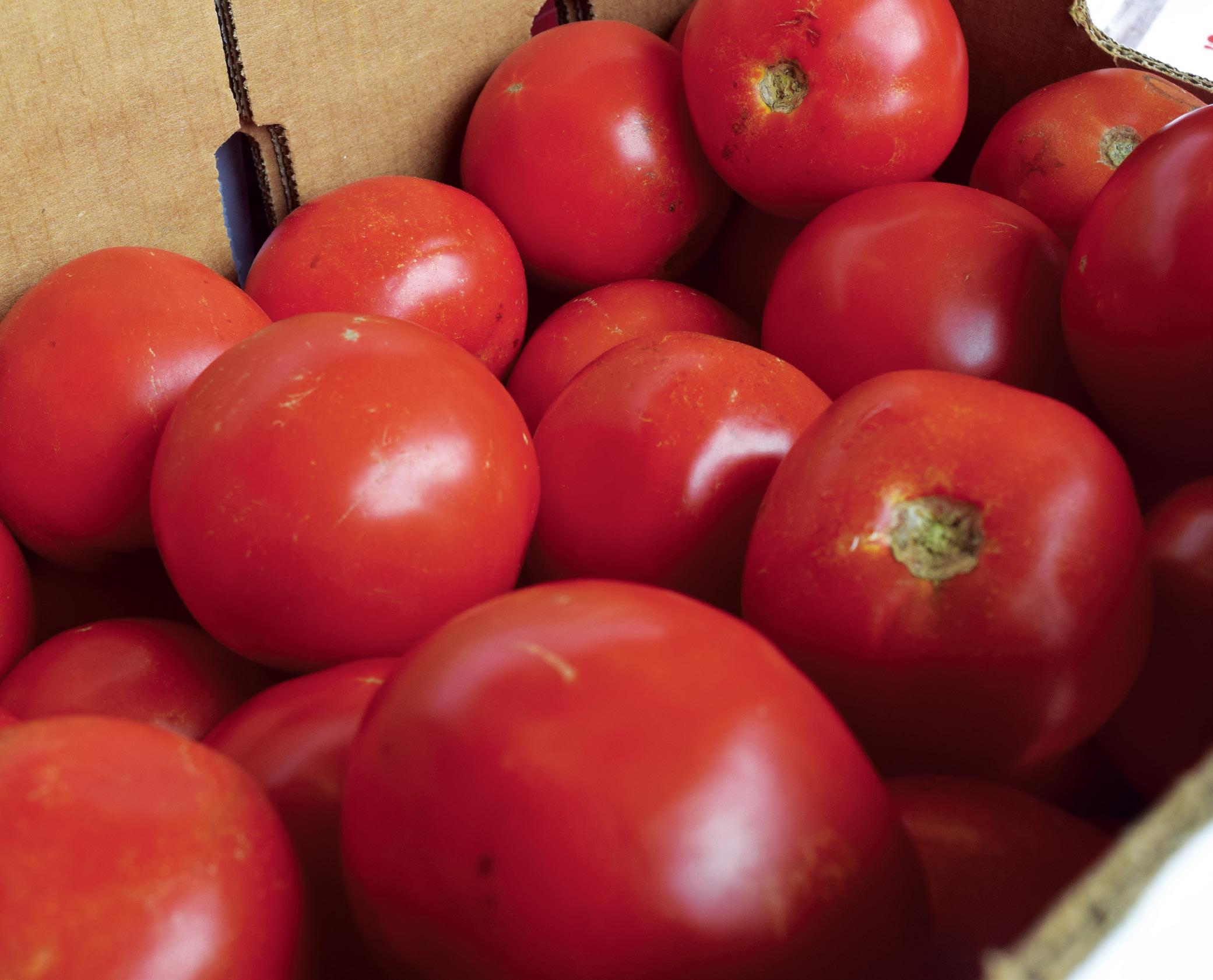


Provided by Brian Schilling Director
The Rutgers Master Gardener program is a volunteer training initiative offered by the NJAES’ Rutgers Cooperative Extension (RCE). There are more than 2,250 Rutgers Master Gardener (RMG) volunteers serving 16 counties. Their mission is to support the home horticulture efforts of the Agriculture and Natural Resources Department, particularly in community education, community beautification, trouble-shooting support, and food production for local food banks.
The training is extensive, taking a full calendar year, and consists of various aspects of horticulture, including plant biology, propagation, soil science, and pest management. Upon completion, participants become Certified Rutgers Master Gardeners.
Atlantic County
Phone: 609-625-0056
Bergen County Phone: 201-336-6780
Burlington County Phone: 609-265-5050
Camden County Phone: 856 216 7130
Cape May County Phone: 609-465-5115
Cumberland County Phone: 856-451-2800
Essex County Phone: 973-228-2210
Gloucester County Phone: 856-224-8040
Hudson County Phone: 201-915-1399
Hunterdon County Phone: 908-788-1339
Mercer County Phone: 609-989-6830
Middlesex County
Phone: 732-398-5260
Monmouth County Phone: 732-431-7260
Morris County Phone: 973-285-8300
Ocean County Phone:732-349-1246
Passaic County Phone: 973-305-5740
Salem County Phone: 856-769-0090
Somerset County Phone: 908-526-6293
Sussex County Phone: 973-948-3040
Union County Phone: 908-654-9854
Warren County Phone: 908-475-6505

A distinctive and impactful program that RMG volunteers support is the Rutgers Garden Helpline. This resource offers personalized, one-on-one assistance to both novice and seasoned gardeners, as well as individuals seeking general guidance on various gardening topics, including pest and disease identification, soil management, and other lawn and garden inquiries. In 2024, the Helpline addressed 13,537 individual inquiries. Many callers wanted advice on how to begin their gardening journey, while others had specific questions regarding chemicals or insects affecting their plants. Additionally, questions were answered related to indoor plants, aquaculture, urban gardening, and community gardening.
Community members can walk in, call, or email their county Cooperative Extension office. However, the most effective way to connect is through the RCE website: https:// go.rutgers.edu/gardenhelpline.
The Helpline form guides you through describing your request and sends the question to the appropriate place for you to receive help.
The Helpline has become a valuable resource for both the community and our researchers. Years of data collection regarding call topics provides a glimpse into the emergence of trends in insect distribution, spread of diseases, and the potential impact of climate change. It’s a one-stop shop for home, lawn, and garden information.
Sometimes the questions are very specific or beyond the knowledge of the volunteer. In these cases, the staff and faculty of each RCE office are there to provide expertise. Volunteers often do additional research and provide the community member with Fact Sheets or a position statement from an expert. It’s also common for the volunteer to connect a community member to other resources such as the Rutgers Center for Turfgrass Science, Rutgers Center for Vector Biology (for tick and mosquito questions), and the Rutgers Plant Diagnostic or Soils Testing labs.
One of the most important things New Jersey gardeners can do to improve their success is to conduct a soil test. Many people are intimidated with the technical report that the test generates. However, the Garden Helpline volunteer can review the report and help formulate an action plan based on the results. NJ soils can be difficult, and this often-skipped step can make a significant difference in creating a healthy garden. Soil tests can be purchased from your county Cooperative Extension office or Rutgers Soil Testing Lab for $20.
As July approaches, we will see a rise in temperature, and rainfall could be high or low. Individuals new to gardening
may struggle with plants that are wilting, yellowing, or showing other hot weather symptoms. Stressed plants are more susceptible to insect attacks and diseases, as well. Let’s look at tasks to be completed in our July gardens.
In flower beds, continue cleaning up spent flowers from the spring and early summer bloomers. For the mid-summer blooming plants, it’s important to deadhead regularly. Deadheading is the practice of removing spent flowers before seed set, ensuring the newly formed seeds do not produce a hormone that stops blooming. You can still plant marigolds, zinnias, cosmos, and salvias this month. Just give them some TLC when first planted if the weather is hot and dry.
Garden beds need similar care this month. Early crops are ready for harvest. If peas are showing up, harvest them regularly to promote more blooming. July is a great month to sow another round of leaf crops such as lettuce, Swiss chard, arugula, kale, and spinach. When July is damp, watch for slugs and other pests in the garden.
July is also a good time to propagate house plants. These plants are actively growing and propagating them now will give them time to grow again before they slow down in winter. Outdoor containers may also become crowded at this point. Keep them looking good with a good cleanup. You may remove a plant or two if the container is too dense, and don’t forget to fertilize.
Reach out to the Helpline with your summer garden questions. The volunteer will walk you through a series of questions to identify whether the issue is due to disease, weather conditions, or gardening practices. The Helpline is here to help you succeed and keep our Garden State growing.
The Cook Community Alumni Association held its annual Distinguished Alumni Awards Luncheon on April 27, 2025, at Nielson Dining Hall on the George H. Cook Campus at Rutgers. This annual event is held during the same weekend as Rutgers Day and Ag Field Day. Awards are presented to deserving alumni who have distinguished themselves through outstanding achievements in academic, career, or volunteer work. The George H. Cook Award is presented to eligible Cook undergraduate alumni and the Dennis M. Fenton Award is presented to eligible Cook graduate alumni. The Awards Committee is chaired by Dr. Lee Schneider (CAES ’70, GSNB’72, GSE’88) and Dr. Linda Madison (CC ’80, GSE’94, ‘02).
The luncheon began with a greeting from CCAA Co-president Amanda Dougherty (CC’08, GSE’09) and welcome from Executive Dean Laura Lawson. A large group of past awardees attended to help induct this year’s class. Each of this year’s six inductees were introduced by a past recipient, who then presented them with a personalized plaque. The awardees spoke about their experiences at Cook and how their lives were shaped by the staff, fellowship, and support each of them received while a student. They engaged the audience with highlights of their journeys since college. At times, they became overwhelmed with emotion, as they vividly recalled the wonderful memories of a joyful time and the impact Cook College/SEBS had on their lives. Their accomplishments were some of the most outstanding since the inception of the award.
George H. Cook Distinguished Alumni Awardees
Katie Bobowski CC’92, Margaret O’Donnell CC’93, Sara H. Shama CC’02, Paul Fischbach CC’87, Dr. Anne L. Nielsen GSNB’08, and Louis Cooperhouse GSNB’87.
If you know a deserving alumnus for either of these awards, please consider taking the time to nominate them. The form is easily accessible at https:// cookalumni.rutgers.edu/contacting-donating-nominating/
Thomas Molnar, the Rutgers plant breeder who led the development of Scarlet Fire®, today formally introduced the latest additions to the university’s dogwood program: Stellar Nova ™, a bright white blooming hybrid, and Eternal Scarlet ™, with blooms of a rich, saturated red tone. Their hues complement Scarlet Fire® and promise to add more color and diversity to the landscape. Stellar Nova™ and Eternal Scarlet™ also possess highly reflective petals, presenting a dazzling show when struck by the sun.
“You can see these trees from a thousand feet away,” said Molnar, an associate professor in the Department of Plant Biology in the Rutgers School of Environmental and Biological Sciences. “They just glow.”
Molnar, also renowned for his hazelnut breeding program, displayed the dogwood varieties to visitors at the Rutgers Horticultural Farm 3 in East Brunswick. The new dogwoods were first cultivated at the farm. The original and largest living Scarlet Fire® dogwood can be seen there as well.
Dogwoods are popular ornamental trees prized for their vibrant spring blossoms, attractive foliage and fruit displays, as well as year-round visual interest. The Rutgers dogwoods are especially coveted for their beautiful blooms, and their resistance to disease, Molnar said.
The Rutgers plant scientist Elwin Orton, now retired, initiated the dogwood breeding program at Rutgers in the 1970s. His work focused on developing disease-resistant hybrid varieties at a time when the disease known as dogwood anthracnose was decimating native Cornus florida. His efforts led to the creation of many successful hybrids, including the well-known Stellar™ series of dogwoods and Venus® dogwood well-loved for its giant white floral bracts.
Stellar Nova ™ is a vigorous, upright-growing tree with bright white blooms that are much larger than those of other Kousa dogwoods available today.
“Stellar Nova™ blooms at the same time as Scarlet Fire®, making it a perfect backdrop for the vivid pink flowers,” Molnar said, adding that the tree’s leaves are thick and dark green, and stay healthy even in summer heat, without curling. “It’s a ‘workhorse’ type dogwood that looks like Cornus kousa on steroids.”
Michael Haberland stood at the edge of a towering granite cornice on a boom lift high above a playground in Paterson, N.J. He was there to remove a massive honey bee hive that threatened the safety of schoolchildren and was wedged between the stone structures of the centuryold school building.
As he carefully worked, he couldn’t help but marvel at the bees’ calm demeanor, even as he dismantled their home, a 150-pound mass of wax and honey.
“The bees were actually really nice,” said Haberland, an associate professor and County Environmental Agent with Rutgers Cooperative Extension, after surviving unscathed. “Even when I was taking apart their honeycomb, they were not aggressive at all.”
Handling beekeeping tasks is all in a day’s work for Haberland, who uses applied research and collaborates with organizations to develop programs that promote innovative, bee-positive environmental practices. Over nearly a decade, Haberland and his research partner, his wife Debra Haberland, have developed a deep understanding of bee behavior.
Their work is a blend of scientific research, education, and environmental advocacy, all aimed at ensuring the health and sustainability of honey bee populations.
“I use beekeeping and the creation of native pollinator habitat for research and as a way to educate the public on the importance of pollinators,” Michael said.
Their subject is the honey bee, known formally as the Western honey bee with the species name Apis mellifera. The small, flying insects play an outsized role in maintaining a balanced environment, pollinating flowers, fruits and vegetables by transferring pollen from one part of a plant to another. They assemble in colonies, which are essentially big families, live in hives and are divided into three types of adults – the queen, the allfemale workers and the all-male drones.
Honey bees face a host of threats: habitat loss, climate change, invasive species, pathogens and pesticide exposure.
“The goal of my research is to produce queens and nucleus hives to increase the availability of locally raised and adapted bees,” said Debra Haberland, who also conducts research under the auspices of her beekeeping company, Working Girls Meadows. “I do this in order to assist the survival and health of bees in our area.”
By conducting research that is advancing queen bee fertility, they hope to preserve honey bees’ existence. By teaching beekeeping classes to undergraduates and the
public, they aspire to convey the vital role honey bees play in the Earth’s ecosystem.
The couple met while pursuing their graduate studies in marine biology at the Moss Landing Marine Laboratory in California. Their shared passion for aquatic biology and environmental science brought them together, setting the foundation for their long-standing partnership in both their personal and professional lives. The Haberlands have been married 38 years.
Their research focuses on improving the health and sustainability of honey bee colonies, with a particular emphasis on queen bee health and genetics. In a collaboration with Penn State University Extension, they are working on techniques to breed healthier honey bee queens to improve the overall health of bee colonies.
Together, they teach an undergraduate course at the Rutgers School of Environmental and Biological Sciences called “Apiculture,” which covers the intricacies of beekeeping and honey extraction. For the class, students are required to bring a beekeeping veil and use The Beekeeper Handbook by Diana Sammataro and Alphonse Avitabile as their textbook.
The full article is available in Rutgers Today




The New Jersey Landscape Contractors Association (NJLCA) is proud to announce Kevin Dulio as its new President—a dedicated industry professional whose passion for horticulture, business leadership, and community engagement is the perfect match for the association’s next chapter. He also happens to be a great guy!
Kevin’s journey in the green industry began in high school, working for local garden centers and developing a deep appreciation for the outdoors. After graduating from Delaware Valley College with a degree in Ornamental Horticulture and Environmental Design, Kevin continued to grow his skills in both design and management. He advanced quickly, becoming a branch manager for a landscape firm in Warren County, where he honed his craft in design/build and landscape management.
Fueled by ambition and a desire to do things differently, Kevin launched his own company, Native Fields Landscaping, LLC. Under his leadership, the company has earned numerous state and national awards from NJLCA and NALP. His professional credentials include ICPI certification and memberships in industry organizations such as NCMA, SIMA, and NALP.
Kevin’s success is not only measured by his landscaping achievements, but by the culture he’s cultivated within his company. Native Fields offers competitive benefits
Black-eyed Susan of course!
The next obvious question is: Who was Susan? We’re not sure, but it appears that the Susan our American plant is currently named for is from John Gay, an English poet writing in the early 1700s.
Susan in Gay’s poem asks if her love, Sweet William, was on the war ship and wonders if he will survive. We have been told not to worry because if you plant Black-eyed Susan (Rudbeckia hirta) together with Sweet William (Dianthus barbatus) both of these biennials will bloom together, a sight which will gladden the heart of every gardener.
The Preakness Stakes, run in May in Baltimore MD, is called the “Run for the BlackEyed Susans” since the winner is draped with a blanket of Viking Poms chrysanthemums which resemble Black-eyed Susans. In addition, Black-eyed Susan is the state flower of Maryland.
Black-eyed Susan roots were used by the Native American population for expelling worms, external sores, swellings, earaches, snake bites, and colds. Since Rudbeckia is closely related to Echinacea, Black-eyed Susan may be beneficial. However, since

By Gail Woolcott Executive Director
including a 401(k) match, health insurance, and a sign-on bonus. But it’s the extras—birthday incentives, team outings, a stocked break room, and paid continuing education—that reflect Kevin’s commitment to his team’s growth and well-being. And many of his employees have been with him for more than 10 years.
When he’s not on the job, Kevin enjoys mountain biking, golfing, and camping. This balance between hard work and personal fulfillment is exactly the kind of leadership NJLCA values.
As NJLCA welcomes Kevin into this role, we also reflect on the deep roots that brought our association to where it is today.
In 1966, six forward-thinking landscape contractors—Roger Dammer, Bob DeRosa, Skip Powers, Skip Gallione, Aubrey Hampton, and Don Leuffgen—gathered in a courtroom in Hackensack, NJ, to form the Bergen County Landscape

Contractors Association (BCLCA). Their goal was simple but powerful: to elevate the landscape profession through collaboration, advocacy, and education.
Over time, the association expanded beyond Bergen County to represent contractors across the state. To reflect this growth, the organization became the New Jersey Landscape Contractors Association. Today, NJLCA serves as a statewide voice for landscape contractors, architects, growers, nurseries, garden centers, and suppliers.
Through trade shows, seminars, networking events, magazines, and legislative engagement, NJLCA has stayed true to its mission: to support the integrity, proficiency, and growth of the landscape industry.
NJLCA’s strength lies not only in its history but in its people. Kevin is joined by a dedicated and diverse Combined Board that represents
every facet of the green industry: Treasurer Adam Reisboard, owner of Mr. C Fence; Chairman of the Board Bob Pedatella, owner of Kodiak Landscape & Design; Director George Futterknecht, retired owner of Wood Landscapes, Inc. and consultant at Yellow Wagon Landscape; Director Shawn Kukol, Operations Manager of Horizon Landscape Co.; Director Taylor Corbett, owner of Corbett Landscape Design; Director Omar Vasquez, owner of SRV Landscaping Construction & Design; Director Ben Heller, owner of Root Landscape Architecture; Associate Director David Gaynor, Account Executive at Middleton & Co. Insurance; Associate Director AJ Tudda, Product Specialist at Bobcat of North Jersey; and Associate Director Rawn Leegwater, owner of NY-NJ Trailer. Finally, we have our Board Advisors, Dr. Steve Fischer of Bergen Community College, and Dr. Jim Murphy of Rutgers University -
By Hubert Ling Horticulture Chair
no large-scale scientific studies have been done and the plant is toxic to cats, I don’t recommend experimenting on yourself.
The genus name is in honor of Olof Rudbeck and his son Olof the younger who were Swedish scientists. One of Olof the Younger’s students was Carolus Linnaeus, the most famous biologist of all time and the inventor of our modern nomenclature system for all plants, animals, viruses, and viroids. The species name hirta is Latin for hairy since numerous short bristles cover the stems and leaves.
Now for a scientific interlude. Black-eyed Susan is a composite, made from hundreds of small flowers, and the 7-20 ‘petals’ are actually bright yellow ray flowers whose petals are flattened out into one wide petal-like structure
and form the outer whirl of the flowering complex. The central black eye mound is made up of hundreds of tiny disk flowers with very small, dark brown flower parts which provide nectar and pollen to visiting insects. To ensure good germination of the seed, give it a cool, moist period for three months, or allow the seeds to naturally overwinter outside.
The plants in nature are 1-2 feet tall with numerous 2-3 inch diameter flowers from July to October. The plants are generally biennial, but they reseed freely and can maintain themselves indefinitely if given care and enough dedicated space. A sunny spot about 3 feet by 5 feet should be big enough to maintain a permanent display of Black-eyed Susans. In fact, if given the ideal
Turfgrass Program
Together, our team brings a wide range of expertise—from hardscape installation to insurance, equipment, and education—all working toward a shared goal: a stronger, more connected green industry in New Jersey.
With Kevin Dulio’s energy and vision leading the way, and the support of an experienced board, NJLCA is poised to grow its impact, serve its members, and honor the legacy of those who planted the seeds nearly six decades ago. We look forward to serving our members and the industry for many more! If you are interested in joining the NJLCA, visit www. njlca.org.
Editor’s Note: Gail Woolcott is the Executive Director for the New Jersey Landscape Contractors Association. Gail was presented with a community service award from the Borough of Fairview, New Jersey for her assistance in leading the 9-11 Memorial Park project and the Legislative Champion of the Year award from the Federation of Employers and Workers of America. She can be reached at 201-703-3600 or by emailing gwoolcott@ njlca.org.
conditions Black-eyed Susan can sometimes be aggressive, although I doubt that it could win a battle with your lawnmower like moneywort and dandelion can. Black-eyed Susans grow best in full sun or partial shade, with good drainage, in slightly acid to neutral soils. They are often found in disturbed fields, roadsides, meadows, and power line rightsof-way. The plant tolerates sand, heat, deer, and drought but will not grow in wet soil or full shade. The plant is very wildlife friendly. The nectar and pollen attract a wide variety of bees, beetles, butterflies, flies, moths, and wasps. Black-eyed Susan is also a host for larvae of the wavylined emerald moth, and silvery, bordered, and gorgone checkerspot butterflies. In addition, finches enjoy the seeds.
Numerous cultivars of Black-eyed Susan have been produced. ‘Indian Summer’ and ‘Toto” have won the Royal Horticultural Society’s Award of Garden Merit. The very popular tetraploid ‘Gloriosa’ daisies were first produced by Dr. Blakeslee of Smith College by using colchicine on Rudbeckia hirta. Gloriosa daisies were introduced at the 1957 Philadelphia Flower Show by Burpee and now come with 3-6 inch flowers in bronze, orange, red, yellow, and bicolors. NJ also has three other native Rudbeckia: Brown-eyed Susan (R. triloba) is a biennial with a slightly smaller flower and a brown eye. We also have two rhizome producing perennials: green-headed tall coneflower (R. laciniata) and orange coneflower (R. fulgida) which has ovate leaves while R. hirta has lanceolate leaves. Rudbeckias are worth the investment and will well reward you.
Editor’s Note: Hubert Ling is Past President of The Native Plant Society of NJ and Horticulture Chair. He can be reached at milhubling@verizon.net.
In this age of readily disseminated literature and specialty nurseries promoting novel garden plants, logic would have it that all the really intriguing and easily grown plants would be known and available to gardeners. However, some excellent plants have managed to sidestep literary sleuths and specialty nurseries alike. A great example is Orixa japonica ‘Pearl Frost’. Introduced to me by close friends, this beautifully variegated shrub has proven to be an ironclad plant for the garden!
Commonly known as Japanese Orixa, Orixa is a member of the Rutaceae or Citrus Family. It is a monotypic genus containing but one species that appears on forested slopes in China, Japan, and South Korea at elevations between 1,500 and 4,000 feet. It was named in 1783 by the Swedish physician and naturalist, Carl Peter Thunberg (1743-1828) from plants he studied in Japan. The genus name supposedly originated from the Japanese name for the plant, although it is currently known as Kokusagi in Japan. The species name reflects the native provenance of Japan.
Orixa japonica is certainly an attractive plant in its own right.
Property rights have always been a cornerstone of the agricultural industry here in New Jersey. Farmers have relied on these rights to own and operate their farms as they have seen fit since the United States declared independence from Great Britain in 1776. There was no feudal system here and nor was there any push to “Collectivize” farming operations like there was in the Communist countries in the early and mid-twentieth century.
Our founding fathers realized that the building of a powerful and vibrant nation would have to be predicated on a strong and independent agricultural economy. And private property rights were the foundation on which this country was built. These rights allowed farmers to own and operate their farms as they saw fit. They could invest, modernize, and adapt so that their farms could become the most efficient and productive of any country in the world.
Recently, agricultural property rights made the news again here in New Jersey when Cranbury Township threatened to use “Eminent Domain” to condemn a 21-acre farm for the purpose of using it to help fulfill their State

By Bruce Crawford Horticultural Manager
The glossy, dark green, and obovate leaves are initially borne on an upright shrub that becomes more broad spreading with age.
Plants reach upwards of 10’ tall with widths exceeding 10’. Plants are diecious, with individual plants bearing only female or male flowers, a strategy plants adopted to prevent self-pollination. Male flowered plants bear 10-12 pollen-bearing flowers along short racemes while female plants bear flowers singularly. The ¼-⅜” wide flowers appear in the leaf axils of the previous year’s growth and have four green petals, with the male flowers displaying four prominent anthers. The female flowers produce a 4-lobed fruit, roughly one inch in diameter that ripens in October with each lobe containing one black seed. As the two layers of the pericarp (the ripened walls of

the ovary) within the pod dry and contract, they suddenly snap and literally propel the seed out of the pod through a slingshot-like action termed explosive dehiscence!
Pearl Frost boasts a very garden worthy and attractive greyish green foliage bordered by an irregular white border. Unlike the brevity of the flowers, the foliage provides wonderful interest from April through October! The glossy foliage begins to appear around mid-April in northern New Jersey and initially sports a bright green center with a pale-yellow border. As the foliage matures in May, it develops the far more sophisticated coloring and variegation. Unlike many variegated plants, the coloring remains steadfast and does not fade nor scorch during summer’s heat. In my experience, it also does not revert. Introduced
by plant guru Barry Yinger, Pearl Frost produces male flowers, and typical to the species the crushed leaves produce a pleasant, spicy fragrance that renders it resistant to deer browse. With the advent of the chill of November, the leaves turn an attractive yellow.
For the garden, Pearl Frost certainly provides all the subtle qualities that a fine garden deserves! Although tolerant of full sun, it performs best in light shade where the foliage also serves to brighten shady woodland gardens and dark corners. Plants prefer humus-rich yet well-drained soils, and I have seen it growing equally well in acidic to nearly neutral soils. During the summer and fall drought of 2024, well established plants failed to show any drought stress. Pearl Frost looks great mixed with blue or
By Peter Melick Agricultural Producer
Affordable Housing quota. My understanding of the situation is that the family that owns the farm has no intention of selling it and would much rather just keep the farm in their family’s possession. But unfortunately for them, Cranbury Township is allowed to use “Eminent Domain” to acquire the farm as long as they can justify that there are no other viable options and that the taking will benefit Cranbury Township. Arguments will continue to be made both for and against the taking and it will likely take months if not years to resolve this issue. Really, the only possible solace for the family at this point is that if the Township is successful in acquiring the farm, they will at least have to be properly and adequately compensated.
And being properly compensated is a lot better treatment than many farmers in New Jersey have gotten over the years. For example, the Pinelands Act and the Highlands Act, which were passed by the State Legislature in 1979 and 2004 respectively, severely restricted the use of private property on hundreds of thousands of acres of farmland across New Jersey. These acts also established another layer of bureaucracy to “govern” over these areas (as if four levels of government were not already enough). These takings were nothing more than politically motivated land-grabs that were justified at the time as being necessary to protect New Jersey’s water supply and to stop over-development. Yet it’s funny
lavender flowered companions such as Virginia Bluebells (Mertensia virginica) or Siberian Bugloss (Brunner macrophylla), or with white variegated plants such as Variegated Fairy Bells (Disporum sessile ‘Variegatum’) and Variegated Solomon’s Seal (Polygonatum odoratum ‘Variegatum’).
Variegated plants often appear garish and are guilty of attracting far too much attention to warrant use in a garden. This is certainly not an issue for Orixa japonica ‘Pearl Frost’ which is a great “team player” for the woodland garden, offering an attractive yet elegant glow throughout the season. Pearl Frost may not be a plant you find at local garden centers, but it is certainly worth searching specialty and mail-order nurseries for this gem. Without doubt, it is the Frosting on the Gardener’s Cake!
Editor’s Note: Bruce Crawford is a lover of plants since birth, is the Manager of Horticulture for the Morris County Parks Commission, and a Past President of the Garden State Gardens Consortium. He can be reached at BCrawford@ morrisparks.net
from an old farmer which were, “Why buy the cow when you can get the milk for free.”
how these Acts were all for the environment, but at the same time, turned a blind eye to both common sense and sound science. And all that the landowners received in compensation for this were empty and broken promises.
One hundred years ago, the cities of Newark and Jersey City went out and actually purchased land and built reservoirs to ensure that they would have an adequate supply of drinking water for their residents. There were willing buyers and willing sellers, a concept and practice that had served our country very well over the years. But I guess times have changed, and we’re not dealing with our grandfather’s Constitution anymore. Or maybe the politicians took heart in some words of wisdom I once heard
I think that Paul Mulshine, the esteemed former columnist for the Star Ledger, said it best when he stated in one of his columns on the Highlands Act that, “The Trenton politicians claim they want to preserve this sort of thing forever. But they don’t want to pay. That doesn’t stop them from patting each other on the back for being friends of the environment, though. I devoutly hope there is a circle of hell reserved for those who purport to do good deeds with other people’s money.” There’s that, and Happy Summer!
Editor’s Note: Peter Melick is co-owner of Melick’s Town Farm in Oldwick and a 10th-generation New Jersey farmer. Peter is Mayor of Tewksbury Township, Hunterdon County, NJ. He also served as a director for the New Jersey Farm Bureau and is a past president of the New Jersey State Board of Agriculture. Peter has also been featured on NJN, News 12 New Jersey and on the Fox Business Network.

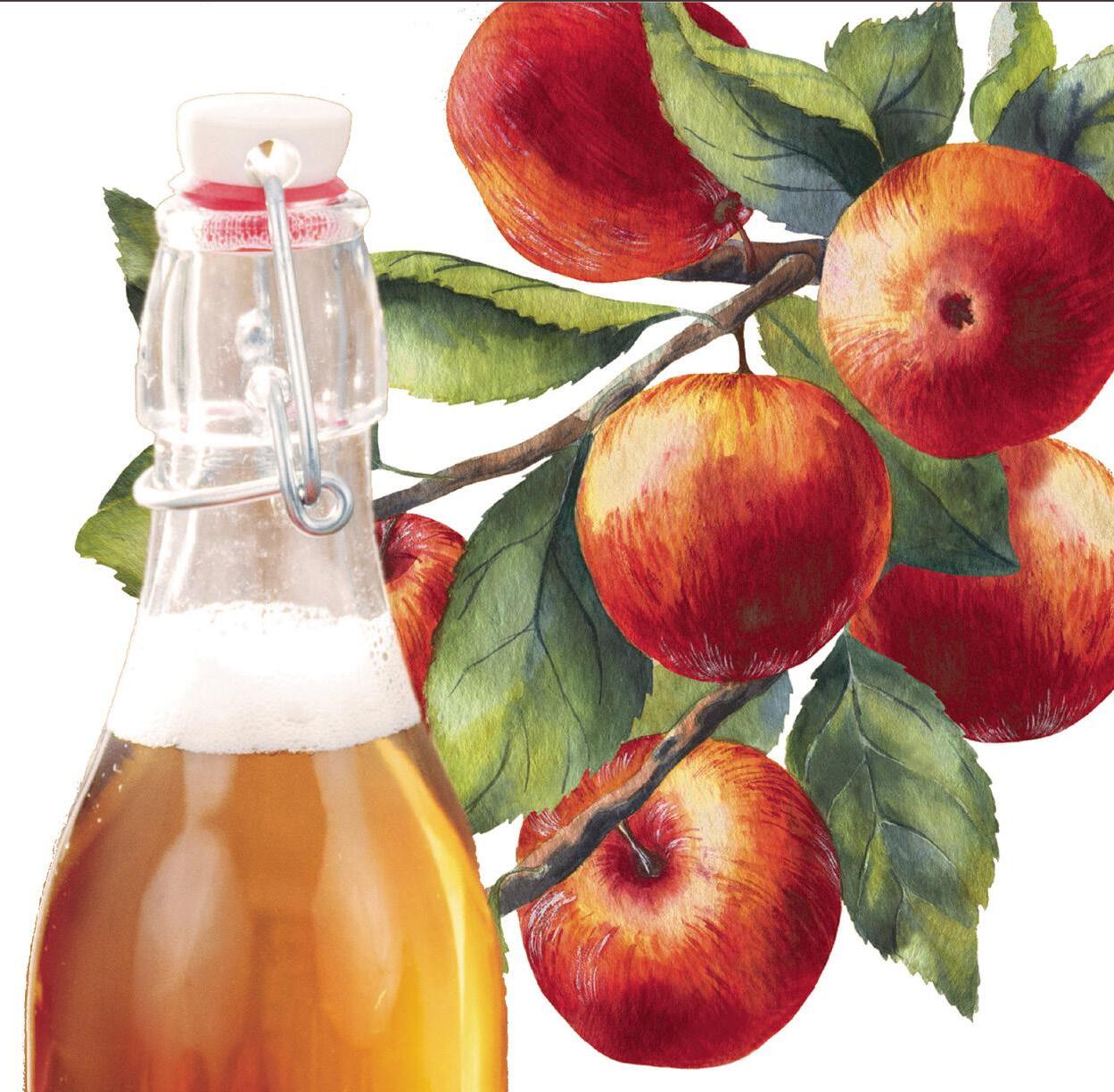



The National Association of State Departments of Agriculture congratulates Stephen Vaden on his confirmation as the next Deputy Secretary of Agriculture. On behalf of state departments of agriculture, NASDA CEO Ted McKinney released the following statement:
“Deputy Secretary Vaden’s experience, demonstrated leadership within USDA and commitment to U.S. agriculture make him well-qualified to serve in this critical leadership role at USDA to address current challenges and opportunities in agriculture. We are confident that Deputy Secretary Vaden’s leadership alongside Secretary Brooke Rollins will ensure USDA remains a strong advocate for farmers, ranchers, agribusinesses and rural communities.
We look forward to working with Deputy Secretary Vaden to continue advancing U.S. agriculture and helping ensure a safe, abundant food supply for all.”
NASDA is a nonpartisan, nonprofit association which represents the elected and appointed commissioners, secretaries and directors of the departments of agriculture in all 50 states and four U.S. territories. NASDA enhances American food and agricultural communities through policy, partnerships and public engagement.
Get ready to dig in, power up, and connect! The New Jersey Landscape Contractors Association (NJLCA) proudly announces the 5th Annual New Jersey Contractors Showcase Expo (NJCSE)—the only outdoor trade show of its kind in the NJ metropolitan area— returning August 6, 2025, to County College of Morris.
This isn’t your typical trade show. NJCSE is where the industry comes alive—outdoors and in action.
Landscape, hardscape, horticulture, and outdoor living pros will have the chance to demo real equipment, test the latest tools and tech, and connect face-to-face with the companies shaping the future of our industry.
“We’re incredibly proud to celebrate five years of the NJCSE,” said Gail Woolcott, NJLCA spokesperson. “This year’s show will be our biggest yet, packed with hands-on demos, expert insights, and unbeatable opportunities to

network and grow your business.”
Industry attendees can expect live equipment demos, hardscape installations in real-time, interactive booths, and Peerto-peer networking.
Whether you’re looking to grow your team, sharpen your skills, or upgrade your tools, this is the one show you can’t afford to miss.
Register now at www.njcse.com and join the movement that’s redefining what a trade show should be.
The New Jersey Landscape Contractors Association (NJLCA) is the voice of the Garden State’s green industry, representing landscape contractors, horticulturists, hardscapers, and outdoor professionals. In partnership with the NJLCA Education Fund, the association proudly hosts the NJCSE to promote education, innovation, and excellence across the industry.

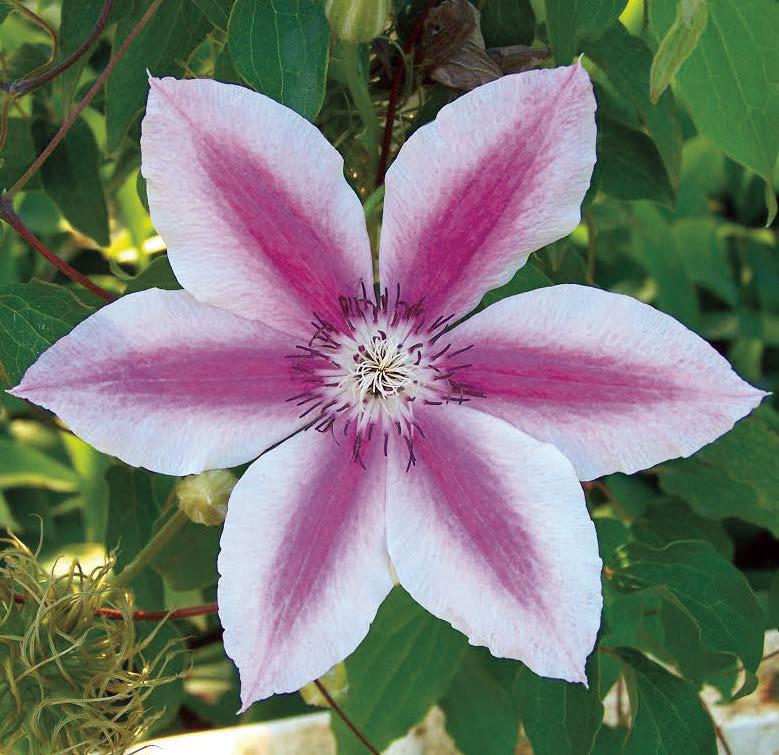



Bobcat of North Jersey in Totowa, Passaic County now offers the awardwinning Bobcat® T7X, the world’s first all-electric compact track loader. This emissions-free powerhouse delivers the benefits of owning and operating a battery-powered compact loader without sacrificing performance.
The machine is totally battery powered with no hydraulics. It is nearly silent, with up to six hours of continuous runtime. The T7X has a 12-hour charge time with 240V, 40A outlet. Flashing safety blue lights let you know the machine is on.
At the heart of this all-electric loader is a powerful 72.6-kilowatt lithiumion battery. With precise and fast control response, the intelligent power management system delivers power when it is needed and extends the machine’s runtime.
Producing no emissions, the Bobcat T7X offers an environmentally friendly solution that leaves competitors’ machines in their exhaust.
Chris
RIGHT: Chris Ryan, co-owner of Bobcat of North Jersey, tests the loading capacity of the Bobcat® T7X all-electric compact track loader in his company’s storage yard.


Richard Hawke has been Director of Plant Evaluations at the Chicago Botanic Garden for nearly 40 years. Recently, he lectured for the Pennsylvania Horticultural Society on his selected proven perennials over the last 40 years. Richard is also the current president of the Perennial Plant Association.
The following are a selection from his list.
The anise hyssop, Agastache ‘Queen Nectarine’ like other agastaches is deer resistant. It has soft peach flowers from mid-June to frost and reaches almost four feet tall. It is an excellent pollinator plant.
Over the last twenty years, there have literally been hundreds of selections of coneflowers made. Echinacea ‘Pink Sensation’ is one of the very best. It thrives in full sun and reaches two feet tall. From June to September, it is covered in lavender to purple flowers which are highly attractive to many species of butterflies.
Relatively new to the market is a new selection of the Joe-pye weed, Eutrochium ‘JoJo’ (synonymous with Eupatorium). While most Joe-pye weeds reach six to eight feet tall, ‘JoJo’ only reaches three to four feet tall. Joe-pye weeds thrive in many soil types but also can grow in swampy areas or where the soil is poorly drained. The butterfly and pollinator

By Andrew Bunting Vice President of Horticulture
magnet thrives in full sun.
Like the coneflowers, the baptisias have gone through an amazing renaissance over the last 20-25 years. Baptisia ‘Pink Lemonade’ is drought tolerant due to its deep root system. At maturity they will have a stout shrub-like stature, reaching four feet tall with a spread of almost six feet. Towering above the foliage are spikes covered in soft yellow and raspberry purple pea-like flowers. Like the aforementioned perennials, Baptisia thrives in full sun.
Another sun lover is the blunt mountain mint, Pycnanthemum muticum, which would be on a list of the best-of-the-best for attracting a myriad of pollinators. Because of the foliage, which has a minty fragrance, it is completely deer resistant. Reaching nearly four feet tall, the upper leaves have an attractive silver color. From June to October, it flowers with fairly inconspicuous pinkish white flowers. While the flowers are small, they are
literally abuzz with activity while flowering. This is a quickly colonizing perennial.
Another fantastic pollinator-attracting perennial is a selection of the garden phlox, Phlox paniculata ‘Jeana’. This is taller than most garden phlox, reaching up to sixty inches tall. It has shown great powdery mildew resistance. Blooming mid-summer into mid-October, it has flower heads that have an abundance of relatively small lavenderpink flowers.
In the fall, Hawke suggests the cliff goldenrod, Solidago drummondii. Blooming in late August to early November, it has terminal clusters of vivid yellow flowers. Like other goldenrods, this Solidago is a good food source late in the season for pollinators. At maturity it reaches three feet tall with a spread of nearly five feet.
There are many exceptional fall blooming asters. Symphyotrichum oblongifolius ‘Cotton Candy’ is a selection of the aromatic
aster. This mounding aster reaches three feet tall and is covered in quarter-sized pink-violet flowers from mid-September to midOctober. This introduction from the Chicagoland Grows® program also has good resistance to powdery mildew.
Most of the ironweeds, Vernonia, bloom in early fall. Vernonia ‘Summer’s End’ is covered in an abundance of small but plentiful redpurple flowers from early September to mid-October. It is one of the best ironweeds for attracting late season pollinators.
Ornamental grasses are an important addition to the perennial border. The upright and narrow leaves and stems bring a vertical element to the garden, and an important element for creating a visual juxtaposition with plants with more bold foliage.
Andropogon gerardii ‘Blackhawks’ is an exciting big bluestem introduction. Throughout the summer the leaves, which can reach up to
five feet tall, are dark green, then begin to turn purple in late June, and turn dark burgundy and nearly black by mid-summer and into the fall.
A selection of the little bluestem, Schizachyrium scoparium ‘Sandhill’ has silvery blue-green narrow leaves which turn to a vibrant orange and purple in the fall. The foliage is a larval host for many pollinators.
Editor’s Note: Andrew Bunting is Vice President of Horticulture for the Pennsylvania Horticultural Society. He is one of the most recognized horticulturists in the Philadelphia, Pa., region and a highly regarded colleague in the world of professional horticulture. Bunting has amassed a plethora of awards, including the American Public Gardens Association Professional Citation, Chanticleer Scholarship in Professional Development, Delaware Center for Horticulture’s Marion Marsh Award, and the Certificate of Merit from the Pennsylvania Horticultural Society. In addition, Bunting has lectured extensively throughout North America and Europe, and participated in plant expeditions throughout Asia and Africa. Learn more at https://phsonline.org/team/ andrew-bunting
The New Jersey Senate Economic Growth Committee reports favorably Senate Bill No. 3662.
As reported on June 12, 2025, this bill strengthens the legal protections provided to farmers under the “Right to Farm Act.” Specifically, the bill allows farmers to recover reasonable costs and attorney fees incurred in the defense of bad faith complaints against commercial agricultural operations, activities or structures when a county agriculture development board or the State Agriculture Development Committee (SADC), as applicable: (1) finds the farmer is entitled to the irrebuttable presumption established under the “Right to Farm Act”; and (2) determines, supported by a preponderance of the evidence, that the complaint was brought in bad faith and all or a portion of the costs and attorney fees are reasonable.
Under the “Right to Farm Act,” the established irrebuttable presumption is that a commercial
agricultural operation, activity or structure or specific operation or practice does not constitute a public or private nuisance, or does not otherwise invade or interfere with the use and enjoyment of any other land or property, if:
(1) the commercial agricultural operation, activity or structure conforms to agricultural management practices recommended and adopted by the SADC, or the specific operation or practice of the commercial agricultural operation has been determined to constitute a generally accepted agricultural operation or practice, either by the appropriate county agriculture development board or the SADC, as applicable; and
(2) the commercial agricultural operation, activity or structure or specific operation or practice complies with all relevant federal and State statutes and regulations and does not pose a direct threat to public health and safety.
Under the bill, a farmer seeking an award of reasonable costs and attorney fees is required to submit an application therefor to the county agriculture development board or the SADC, as applicable, after being found entitled to the irrebuttable presumption. The county agriculture development board or the SADC is then to determine by a preponderance of the evidence whether the complaint was made in bad faith and whether the costs and attorney fees, or a portion thereof, are reasonable. If the complaint is determined to have been brought in bad faith and reasonable costs and attorney fees are determined, the county agriculture development board or the SADC is to issue an order for the person filing the complaint to pay the reasonable costs and attorney fees to the farmer.
New Jersey Senate Bill No. 3662 is identical to New Jersey Assembly Bill No. 4603.
Initially begun as a radio advertising campaign, the Jersey Fresh program now uses billboards, television and print ads, and colorful point-ofpurchase materials to remind consumers about the availability of locally grown products. The Jersey Fresh message has reached nearly every state in the nation and in many countries abroad, with special emphasis on consumers along the Eastern Seaboard from Richmond, VA, to Montreal, Quebec, where the campaign was translated into French to accommodate this important New Jersey market.
During the Jersey Fresh growing season, you can buy just picked produce directly from a local farmer on or near the farm where the fruits, vegetables and herbs actually grow. You can also support local farmers by finding a grocery store near you that sources from local Jersey farms.
When you buy local, you support family-owned farms, and as a result, those families can afford to stay on the farm doing the work they love.
New Jersey currently has 9,893 farms with 734,000 acres farmed, according to the United States Department of Agriculture’s National Agricultural Statistics Service (USDA/NASS).
Open farming lands will survive only as long as farms are financially viable. When you buy locally grown food, you are doing something proactive about preserving the agricultural landscape.
(Continued from
New Jersey grows more than 100 different varieties of fruits, vegetables and herbs and is ranked nationally in the top ten as producer of such items as blueberries, peaches, bell peppers, squash, tomatoes, and cranberries. According to USDA/NASS, New Jersey 2024 sales for principal vegetables totaled almost $225 million.
Tomatoes led in value of production, followed by bell peppers and sweet corn.
On the fruit side, the total value of the 2024 blueberry crop in New Jersey was $84.8 million. New Jersey cranberry producers harvested 588,000 barrels in 2024.
Abraham Browning of Camden is given credit for giving New Jersey the nickname the Garden State. According to Alfred Heston’s 1926 twovolume book Jersey Waggon Jaunts, Browning called New Jersey the Garden State while speaking at the Philadelphia Centennial exhibition on New Jersey Day (August 24, 1876).
Browning said that our Garden State is an immense barrel filled with good things to eat and open at both ends, with Pennsylvanians grabbing from one end and New Yorkers from the other. The name stuck ever since. However, Benjamin Franklin is credited with a similar comparison of New Jersey to a barrel tapped at both ends. Some have used that to discredit Browning with naming the Garden State.
In 1954, the state legislature passed a bill to have “The Garden State” added to license plates. Before signing the bill into law, Governor Robert Meyner investigated the origins of the nickname and found, “no official recognition of the slogan Garden State as an identification of the state of New Jersey.” He added, “I do not believe that the average citizen of New Jersey regards his state as more peculiarly identifiable with gardening for farming than any of its other industries or occupations.” Governor Meyner vetoed the bill, but the legislature overrode the veto. The slogan was added to license plates soon after.
We need to continue making the Garden State great by keeping the Garden in the Garden State.





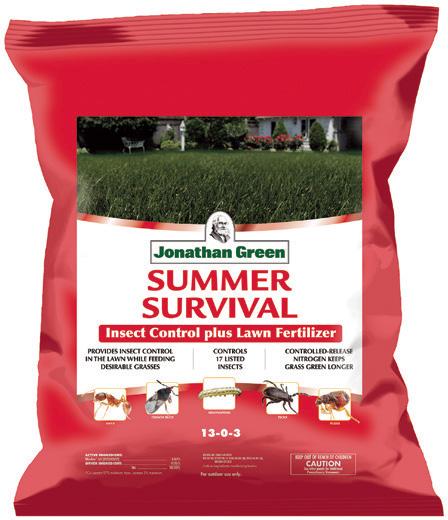












Toro, a leading global provider of solutions for the outdoor environment, announced a new recycling partnership with Call2Recycle, the nation’s largest consumer battery stewardship and collection program. Along with the Outdoor Power Equipment Institute, the Power Tool Institute and other participating manufacturers, the initiative will ensure the safe collection and responsible recycling of high-energy batteries used to power outdoor tools and equipment.
“At The Toro Company, sustainability isn’t just a goal; it’s our very foundation,” said Tiffany Brand, senior sustainability manager at The Toro Company. “Our commitment to sustainability extends to our participation in the High-Energy Battery Recycling program, ensuring that even as we power productivity, we do so responsibly, enriching both the land and the lives it sustains.”
To provide the best service in support of a circular economy, Call2Recycle has partnered with industry leaders The Toro Company, Chervon, Husqvarna, Makita, Stanley Black & Decker, STIHL, and Techtronic Industries. Through this collaboration, consumers of their various brands’ products now have access to a responsible end-of-life solution for high-energy batteries.
“Thanks to the participation of our industry partners, we’re making it easier than ever for consumers to recycle their high-energy batteries with the launch of our new program,” said Call2Recycle CEO Leo Raudys. “Together, with brands consumers know and love, we’ve created a process to conveniently and seamlessly collect, assess, ship, and process these recyclable batteries that are increasingly common in everyday products. Call2Recycle applauds the collaboration and commitment of our partners, whose dedication to safety and environmental stewardship is paving the way for a circular future.”
As the prevalence of battery-powered products increases, so does the amount of energy needed to power them. Many large products, from lawnmowers to snow blowers, require the use of high-energy batteries (over 300-watt hours). As these high-energy batteries reach their end-of-life, the accessibility of recycling collection sites becomes fundamental in ensuring the safety of people, property, and the environment.
Under the new program, eligible and enrolled retailers will have access to safety training and recycling materials. Consumers will be able to return end-of-life high-energy batteries to participating collection sites, where they will be assessed, shipped, and processed for proper recycling.
For more information about the High-Energy Battery Program, visit: www.call2recycle.org/hebattery.

By Andy Lagana Chef
Hello Gardener News
readers. In keeping with my preference for grilling during the summer months, I would like to share a delicious recipe for Middle Eastern Chicken.
Ingredients needed are 2 lbs. boneless chicken thighs, 2 tbsp. ground cumin, 8 cloves garlic – minced, salt and pepper to taste, 6 tbsp. olive oil, ¼ tsp. cayenne pepper, 2 tsp. allspice, 2 cups mixed green salad, 1 whole tomato – diced, 1 whole red onion – diced, ¼ cup tahini yogurt, tzatziki sauce and pita bread.
To start, soak skewers in water (if using them). Place all marinade ingredients in a bowl and mix, or pulse them in a food processor to make a paste. Rub the chicken on all sides with the marinade and let it sit at minimum for 20 minutes (or up to 24-48 hours refrigerated for the best flavor). You can also cut the chicken into 1-inch cubes and marinate this way for the skewers. Grill the chicken on a pre-heated grill, mediumhigh heat and close the lid to the BBQ until all sides have nice grill marks, which will be about 8 minutes each side.
Then, move the chicken to a cooler part of the grill, or finish cooking it in a 350° F oven until it’s cooked all the way through at 170° F for about 10 minutes. Please note that alternatively, you can bake the chicken thighs in a 375° F oven for 30-40 minutes or use a grill pan on the stovetop.
Finish plating by assembling the green salad
over the warmed pita, top with tomatoes and red onions, add the chicken skewers, then finish by topping with tahini yogurt and tzatziki sauce.
For sides, I have a couple of favorites including a refreshing Israeli Salad. Gather 2 extra-large tomatoes – diced, 1 English cucumber – diced, 1 cup red onion – chopped, 1 red bell pepper – chopped, 1 yellow pepper chopped, 1 cup of mixed herbs (parsley, mint cilantro), the zest and juice of one lemon, olive oil, salt and pepper.
Chop the first six ingredients into a very small fine dice. Take your time with this, and remember –a sharp knife makes this easier! Place in a large bowl and toss with the lemon zest, lemon juice, olive oil, salt, and pepper. Taste and adjust the lemon and salt to your liking.
Next, prepare this tasty Middle Eastern Rice. You’ll need 2 cups of Basmati rice, 1 tbsp., olive oil, 3 cups water and 1 tbsp. salt. For a topping, set aside 2 tbsp. olive oil, 2 shallots – sliced, 3 tbsp. toasted pine nuts, zest from one lemon, 1 tbsp. of Za’atar if available, and fresh herbs – parsley, dill, and mint for garnish. Za’atar is a Middle Eastern spice blend of herbs such as thyme, oregano, marjoram, or a combination of these, along with other spices including sesame, sumac, cumin, or coriander. It definitely enhances the flavor of any dish.
Cook the basmati rice. Heat olive oil in a
medium pot over medium heat, add the rice, and stir until nutty and fragrant for about 3-4 minutes. Add water and salt, give a good stir, and bring to a boil over high heat.
Once boiling, slowly lower heat to medium-low (retaining that simmer) and cover tightly using a thin kitchen towel between the pot and the lid to create a tighter seal. Be sure your rice is simmering before you set the timer for 15 minutes. After this time, take a quick peek to see if all the water is cooked off (look for the steam holes), replace the lid, turn the heat off and let stand for 5-10 minutes. While the rice is cooking, make the topping. Heat olive oil over medium heat in a skillet. Sauté the shallots until golden brown, stirring often. Add the lemon zest and pine nuts, and sauté for 3 more minutes, or until the pine nuts are golden. Turn the heat off and stir in the Za’atar spice, toasting it a bit. Fluff the basmati rice with a fork, separate the grains, and place it in a shallow serving dish. Spoon the shallot mixture all around the top of the rice. Add more salt to taste, but keep in mind, some Za’atar already has salt. Finally, garnish with fresh herbs.
For a wine selection, a crisp white like Sauvignon Blanc or a Pinot Grigio is an ideal choice. These wines’ high acidity and citrusy notes can cut through the rich flavors of the dish and complement the spices. Enjoy!




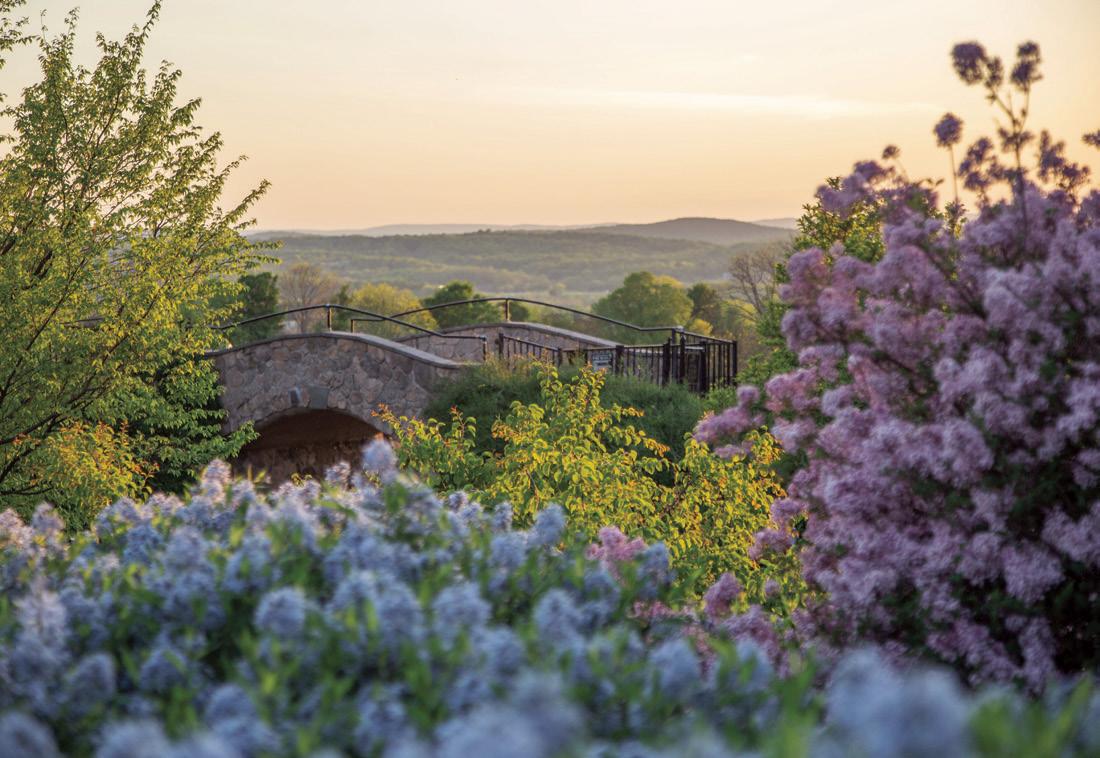



The Northeastern Association of State Departments of Agriculture convenes the following 10 states: Connecticut, Delaware, Maine, Massachusetts, New Hampshire, New Jersey, New York, Pennsylvania, Rhode Island, and Vermont.
May 21, 2025
We understand and appreciate the passion many people feel about animal welfare. Our team is deeply committed to the health and safety of animals across Maine.
We are currently investigating a reported situation involving horses in Hampden. However, due to strict confidentiality laws that govern active investigations, we are legally prohibited from sharing case-specific details at this time. These protections exist to ensure the integrity of enforcement actions and potential legal proceedings.
A recent public action alert regarding this case has generated thousands of emails and calls. This volume of communications risks disrupting our ability to carry out core responsibilities, including direct animal care and case management. It can also have serious operational consequences as staff are working diligently alongside law enforcement, animal control, and animal health professionals to address the situation.
We respect the public’s passion and right to advocate, and we reaffirm our commitment to protecting animals across Maine.
This matter is being taken seriously. Our work is guided by facts, legal standards, and professional veterinary assessments. We ask for patience and trust as we fulfill our responsibility to protect animal welfare within the framework of Maine law.
Thank you for your understanding.
Organizations seeking grant funding for Spring 2026 tree planting projects as part of the state’s Tree for Every Delawarean Initiative (TEDI) have until July 21 to submit their application.
Grant requests must be between $10,000 and $40,000. Project funding is contingent upon the TEDI program receiving funding in the state’s FY 2026 budget.
Eligible applicants include state agencies, conservation districts, counties, non-governmental
organizations having 501(c)(3) status, municipalities, public school districts, private K-12 schools, colleges and universities, business entities responsible for corporate campuses, and tribal governments.
To date, more than 350,000 trees have been planted.
For more information and details on how to apply, visit de.gov/tedi.
New York State Agriculture Commissioner Richard A. Ball today congratulated the over 200 students that participated in the 2025 New York State Envirothon. Students from across the state traveled to SUNY Cortland on May 28-29 to participate in the two-day hands-on environmental competition focused on topic areas such as: soils, forestry, wildlife, aquatics, and an emerging environmental issue: Roots and Resiliency: Fostering Forest Stewardship in a Canopy of Change.
Commissioner Ball said, “With climate change continuing to impact us all, it has never been more inspiring to have our young people be so engaged and passionate about the environment. The annual Envirothon competition provides a unique opportunity for our students to put their education to the test through hands-on experiments and helps shine the spotlight on the critical importance of preserving our natural resources. I congratulate our New York teams and our winners and wish them all the best of luck moving forward.”
Commissioner Ball additionally congratulated the student winners of the annual New York State Envirothon Competition. The team from The Mount Academy in Ulster County was named New York State Champion at the longstanding hands-on environmental competition, which challenges students on their knowledge
of natural resource science, public speaking, and civic engagement. Hudson High from Columbia County took second place and Skaneateles High School in Onondaga County and Chautauqua Lake in Chautauqua County tied for third place.
The winning team from The Mount Academy will travel to the International NCF-Envirothon to represent New York State this summer in Alberta, Canada. Each member of the team received a scholarship, and the team will compete against other top teams from the United States, China, Singapore, and Canada.
The NCF-Envirothon competition is a series of field station tests in the areas of soils/land use, aquatic ecology, forestry, wildlife, and an emerging environmental issue. Throughout the week-long competition, students demonstrate their knowledge in these areas through written tests and interactive stations. The teams also prepared oral presentations on this year’s current issue, “Roots and Resiliency: Fostering Forest Stewardship in a Canopy of Change.”
In the New York State Envirothon, 39 teams from across New York State competed in environmental science and natural resource management written and oral tests during the two-day competition. The teams, made up of five students from grades 9 through 12, qualified at the regional or local level to receive invitations to the state competition.
The Northeast Dairy Business Innovation Center (NE-DBIC) announces a new grant made possible through the USDA’s Commodity Credit Corporation. With total funding of $1,750,000, the Organic Dairy Product Promotion (ODPP) Grant will make it easier for youth-based centers to serve regionally produced USDA-certified organic dairy products to students across the Northeast.
Funded projects will support the expansion and addition of organic dairy for program meal services. Grant funds are focused on the inclusion of organic dairy as an option and are not designed to displace other locally produced and procured dairy products.
Individual grants will range from $50,000$500,000 with no match requirement. Grant funds can be used for the purchase price of organic dairy products. .
Eligible applicants include licensed dairy processors, distributors who primarily serve wholesale and/or institutional buyers, and youth institutions including K-12 schools, colleges, afterschool programs, and summer feeding programs that are currently eligible to participate in federal child nutrition programs.
This program is open to applicants in 11 Northeast states: Connecticut, Delaware, Maine, Maryland, Massachusetts, New Hampshire, New Jersey, New York, Pennsylvania, Rhode Island, and Vermont. Applicants from outside of the region may apply if they currently provide processing or distribution services within the Northeast region.
The Request for Applications is available now on the NE-DBIC website: https://nedairyinnovation. com/grants/organic-dairy-product-promotion-grant/
The application will be open until July 31, 2025 at 2 PM ET. This is the first of two times that this grant will be offered.
The NE-DBIC’s investment and project strategy promotes innovation and resiliency for regional production of dairy products across an 11-state Northeast region. Hosted by the Vermont Agency of Agriculture, Food and Markets (VAAFM), the NE-DBIC is funded through the USDA-AMS. For more information on NE-DBIC, visit: https:// nedairyinnovation.com
For questions, please contact: Laura Ginsburg
NE-DBIC Lead and VAAFM Dairy Strategy & Innovation Manager 802-522-2252 | Laura.Ginsburg@vermont.gov
New Jersey Assistant Secretary of Agriculture Joe Atchison highlighted the Jersey Fresh season by harvesting asparagus at Sheppard Farms and viewing the electronic packing of asparagus at Eastern Fresh Growers to emphasize that locally grown produce and other farm products are now appearing in farmers markets and stores around the state.
“The season is off to a great start,” Assistant Secretary Atchison said. “We are anticipating a great season for our farmers and all who produce Jersey Fresh fruits and vegetables. Jersey Fresh has been part of our state’s agricultural fabric for more than 40 years. Consumers know the Jersey Fresh label means they are purchasing locally grown products picked at the peak of freshness. This also supports the local economy and allows our farmers to continue to grow the best produce year after year.”
New Jersey ranks in the top 10 in the production of several crops. According to the latest United States Department of Agriculture Census, New Jersey was the No. 4 state in the U.S. in acres of asparagus harvested at nearly 2,000. The value for vegetable production for New Jersey in 2024 was nearly $225 million, up almost $16 million from 2023. Other crops with an early harvest that are becoming available daily include kale, lettuce, radishes, spinach, strawberries, and beets.
Pennsylvania Agriculture Secretary Russell Redding and Pennsylvania Department of Community and Economic Development Secretary Rick Siger had a sweet start to their summer at Destiny Dairy Bar, one of 51 PA Preferred® creameries featured this year on Scooped: An Ice Cream Trail.
“Pennsylvania ice cream is the sweetest you’ll find anywhere,” Secretary Redding said. “Meeting a farm family, seeing where they work their magic, and trying fresh-made local ice cream makes summer even sweeter when you know your purchases help support Pennsylvania farms and keep our economy thriving.”
Scooped: An Ice Cream Trail has inspired Pennsylvania dairy-centered adventures, connecting farm families and ice cream lovers, every summer since 2018. A partnership of the Pennsylvania Department of Agriculture’s PA Preferred® program, DCED’s Tourism Office, and the Center for Dairy Excellence, the 2025 trail will take visitors all across Pennsylvania to more exciting dairy destinations than ever.
Travelers on the Ice Cream Trail can plan their adventures, learn about participating creameries, and sign up free at visitpa.com/scooped. Dedicated dairy lovers can accumulate points by visiting trail stops and making purchases. Points accumulated from May 30 to September 7 earn prizes through the digital passport. Prizes include a commemorative metal tumbler for six
stops, and for 10 stops, an entry into a grand prize drawing to win an overnight getaway to Lancaster County to experience “life on the farm”. Redeeming points from 16 trail stops can earn both the tumbler and an entry to win the grand prize.
With 4,940 dairy farms and 468,000 cows producing 10 billion pounds of milk each year — about 2,501 gallons per cow — Pennsylvania ranks eighth in milk production nationally. Pennsylvania’s dairy industry provides more than 47,000 jobs and supports our state economy to the tune of $11.8 billion annually. Pennsylvania also ranks sixth in number of dairy cows, second in butter production, third in ice cream and Swiss cheese, and fourth in sour cream.
Led by Visit PA, the Commonwealth’s “Great American Getaway” initiative encourages visitors from nearby metro areas and beyond to explore hidden gems and classic favorites across Pennsylvania, proving that you don’t have to travel far for a great escape. Visitor spending provides more than $80 billion in economic impact and directly supports more than 330,000 jobs across the Commonwealth (2023, Tourism Economics).
Those who embark on the Ice Cream Trail are encouraged to share every sweet stop with #PAScoops on visitpa.com’s Facebook, Twitter, Instagram, or Pinterest.
Excessive heat and humidity are the leading causes of fungus. Fungus often occurs in times of stress, such as drought, long rainy seasons, and overwatering.
Fungus often develops because water stays on the leaf surface far too long. Mycelia (or the vegetative part of fungus) use the water as a “highway” to travel from leaf-to-leaf. This allows the fungus to spread to other parts of the lawn.
This is also the reason that you should not walk through your lawn when it is battling fungus. If there is moisture on the lawn you can spread the fungus across the grass.
Another cause of fungus is undernourishment. When grass does not have the right amount of nutrients it is more susceptible to disease.
After it rains, there’s typically more water available in the soil for the grass plants. When plants take up that water, they are also taking up nutrients (such as nitrogen) that are in the soil. The more it rains, the faster that nitrogen is used up. If the nitrogen is not replenished, the problem will continue.
Unfortunately, fungus will not go away on its own. You must treat it and then start implementing practices to prevent it from coming back in the future.
If you irrigate, do it early in the day. This will allow your lawn to absorb the water and then dry off throughout the day. Watering late in the day or in the evening does not allow the lawn to dry and will promote fungus. Because fungus moves through water, a wet lawn will allow fungus to spread much faster.





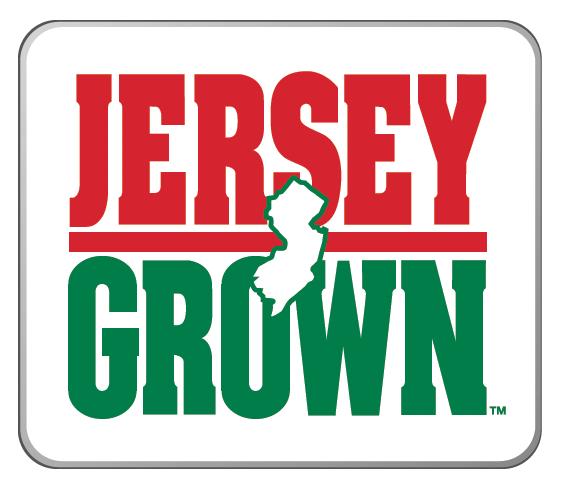

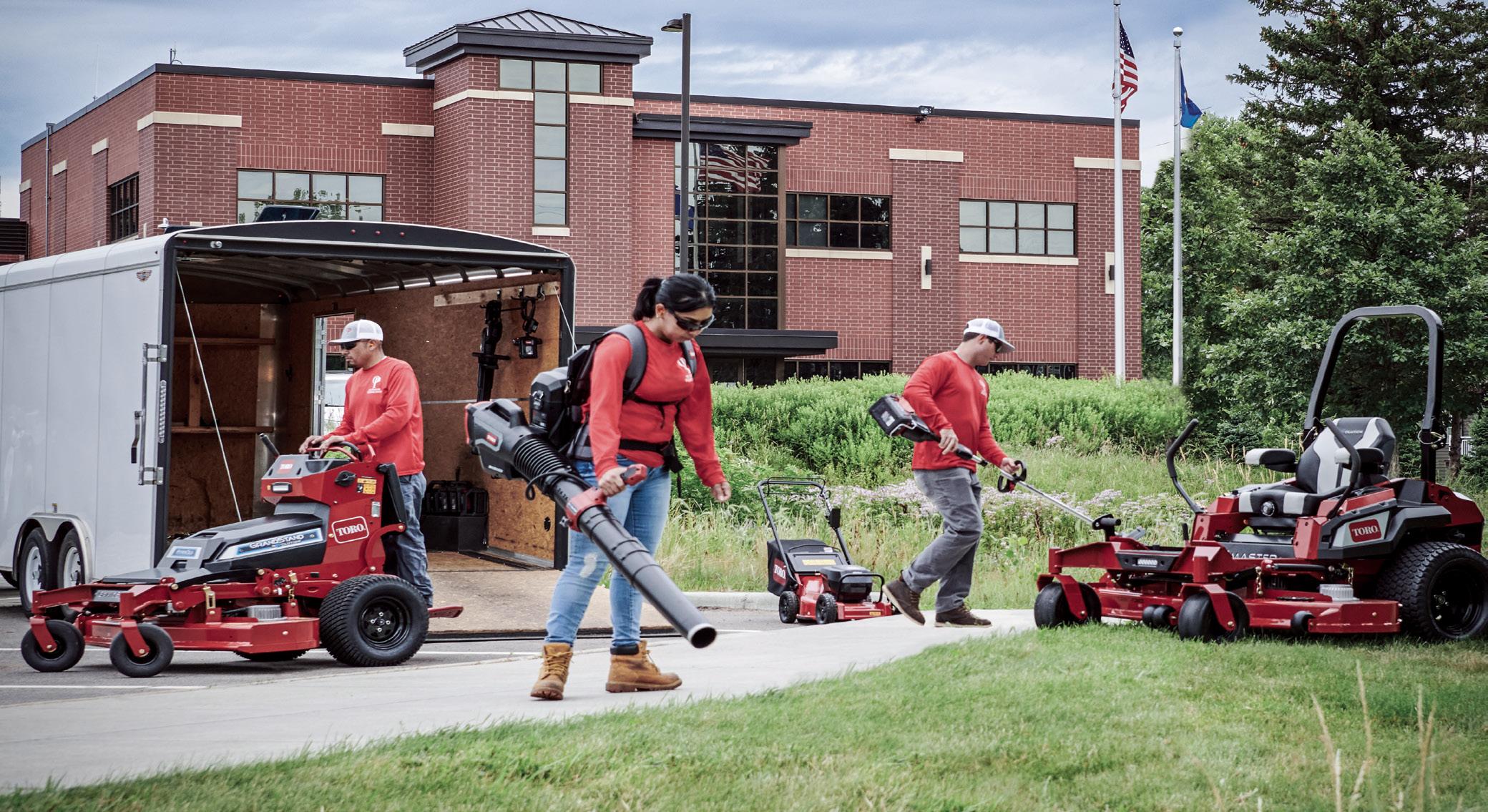





7500-G SERIES ZERO-TURN
96” TURBO FORCE ® CUTTING DECKS
PRODUCTIVITY TO A NEW LEVEL
Impressive 96” wide cutting deck folds to 75” to fit in
ALL DAY PERFORMANCE
The fully interchangeable 60V Max*
Flex-Force battery system powers the entire line of Revolution commercial grade handheld tools. The backpack, available as a power source for the leaf blower, string and hedge trimmers, and is built for comfort and ready to keep jobs moving all day.


STAND-ON MOWERS
TRACTION & HANDLING
A wide stance and optimal balance enhance hillside stability and control.
CUSHIONED SUSPENSION
Flex-Ride operator platform suspension self-compensates for operators of all sizes, resulting in less fatigue and higher productivity throughout the day.

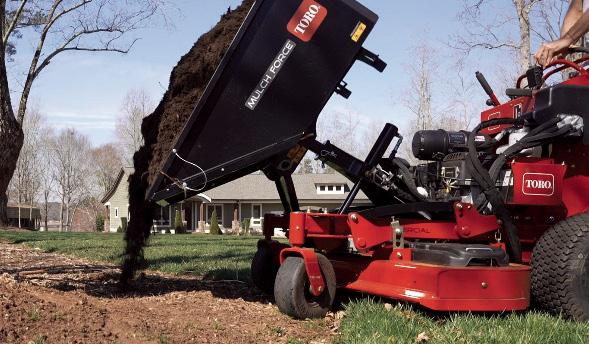

Dual
Provide

A variety of attachments and accessories such as Mulch Dump, Pro-Force blower, snow thrower, power broom, tine rake, dethatcher and BOSS snow blade all provide the ultimate in productivity.

